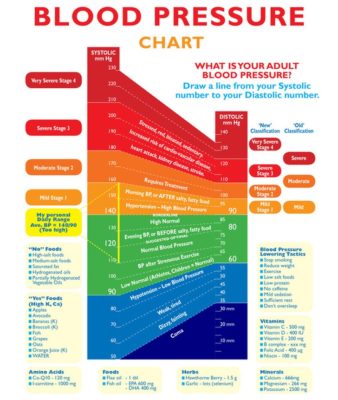Top Signs of High Blood Pressure

High blood pressure is a silent killer. For many, there are no obvious symptoms that indicate that their blood pressure is dangerously high, and it’s a scary thought. Failing to treat and control high blood pressure can put pressure on the artery walls and lead to irreparable damage to the blood vessels and vital organs. Strokes, heart attacks, blood clots and kidney disease are just some of the many complications that can result from high blood pressure.
So, what can you do? In this post, we’ll take you through the warning signs of high blood pressure you should be looking out for — so that you can take control.
The Numbers Game: Reading Your Blood Pressure
Before we look at reading your blood pressure, we first need to understand what blood pressure is. Your heart is constantly pumping blood and oxygen around your body and it’s this pumping motion, pushing the blood through your arteries, that creates pressure. When there’s too much of it, your artery walls become strained, causing hypertension (or high blood pressure).
But if there are no real symptoms that warn you that you need to take action to lower your blood pressure, how do you know when it’s getting dangerously high? Fortunately, there is a way, and it’s all in the numbers. Investing in a home blood pressure monitor allows you to read and track your blood pressure so that you can take preventative measures to safeguard against the potentially devastating consequences of high blood pressure. Our truMedic BP2000 blood pressure monitor has a “live voice” feature that makes reading your blood pressure easier than ever. Just slip the band over your arm, wait for the strap to inflate and listen out for the numbers.
A reading will tell you whether your blood pressure is normal, low or high. Every reading produces two numbers:
- Top number: the systolic blood pressure, which is the amount of pressure in the arteries when your heart contracts.
- Bottom number: the diastolic pressure, or the amount of pressure in the arteries when your heart relaxes
All of our blood pressure monitors come with a helpful chart to help you understand these numbers.

To get the most accurate reading, we’d always recommend testing your blood pressure on both arms.
Other Signs You Might Be Prone to High Blood Pressure
Aside from reading your blood pressure regularly, it can be tricky to identify whether you’re at risk of high blood pressure. However, there are some hereditary and lifestyle factors that can lead to secondary high blood pressure — that is, high blood pressure caused by an existing medical condition. If you fall into one or more of these categories, you should keep an eye on your readings:
Your Age
The older we are, the higher our chance of high blood pressure. You should start checking your blood pressure once a year from your 20th birthday and increase the regularity with each passing year.
Your Ethnicity
Research has found that people with African or South Asian ancestry are at a greater risk of having high blood pressure.
Obesity
If you’re overweight or obese your chances of developing hypertension are drastically increased. If you’re unsure whether your weight is putting your health at risk, start by calculating your BMI.
Family History
Hypertension is hereditary, which means that if you have a close family member who suffers from high blood pressure, your chances of developing a similar condition are much higher. Although research is still finding new genetic causes, there are currently eight common genetic differences that increase the risk of developing hypertension.
Do You Have Diabetes?
If you have diabetes you may be at higher risk of hypertension. Studies have found that people with type 1 diabetes can control their blood pressure by keeping their blood sugar levels consistent through controlling their diet and insulin intake.
Your Environment
If you live in a cold climate, chances are your blood pressure is higher. Your systolic and diastolic blood pressure values vary according to outdoor temperature. When your body is cold, your heart works harder to pump blood around your body — so if you live in cold climes, you’ll likely receive a higher reading.
Do You Smoke?
Smoking narrows the blood vessels and reduces the blood’s oxygen levels. This means that the heart has to pump faster, causing blood pressure to rise.
Your Alcohol Intake
If you drink regularly you probably have a higher systolic blood pressure than those who drink socially or not at all. A glass or two is no problem, but consistently consuming a large amount of alcohol can drastically increase your blood pressure and have an overall negative effect on your health.
Your Salt Intake
Having too much salt in your diet leads to higher blood pressure. Instead, try swapping out salt for herbs and spices to keep your body healthy, without compromising on taste.
Signs of Extreme High Blood Pressure: When Is High Blood Pressure a Medical Emergency?
Your high blood pressure may go unnoticed for years, but if your’s exceeds 180/110 (180 being the systolic blood pressure, and 110 being the diastolic blood pressure) this is considered a medical emergency. You may very well experience the following symptoms:
- Headache
- Vomiting or nausea
- Dizziness, blurred or double vision
- Breathlessness
- Nosebleeds
- Heart palpitations
If you experience any of these side effects, it’s important that you see a doctor immediately.
High blood pressure may often be described as a silent killer, but it doesn’t have to be. Take the risk away by keeping on top of your blood pressure readings. Check out our selection of home blood pressure monitors today and take back control of your health.



